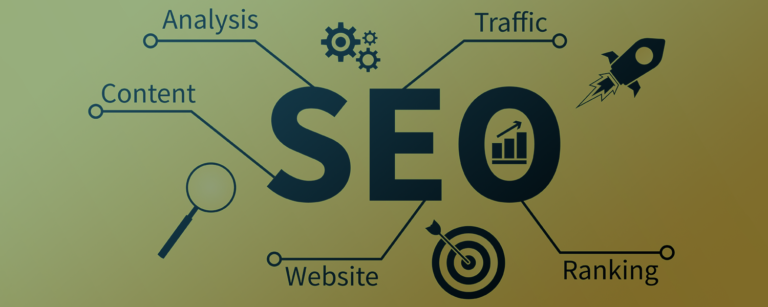You’ve launched your dropshipping business and secured those exciting first sales. Now comes the critical challenge: how to scale your dropshipping business to achieve not just higher revenue, but sustainable, long-term success. This comprehensive guide breaks down the 6 essential steps you need to take your online venture to the next level.
Table of Contents
- Why Scaling Your Dropshipping Business Matters
- Step 1: Selecting High-Profit Products for Scale
- Step 2: Optimizing Your Online Shop for Conversions
- Step 3: Implementing Effective Marketing Strategies
- Step 4: Automating Your Dropshipping Business
- Step 5: Enhancing Customer Retention
- Step 6: Analysis and Continuous Adaptation
- Conclusion: Your Path to Dropshipping Success
Why Scaling Your Dropshipping Business Matters
In the dropshipping model, starting is relatively straightforward—no inventory requirements mean you can launch quickly. However, to achieve meaningful success in this competitive field, you must scale your dropshipping business effectively.
Proper scaling means multiplying your sales without proportionally increasing costs, creating the profit margins necessary for sustainable growth. Without a strategic scaling approach, you’ll quickly hit revenue ceilings and struggle against growing competition.
Step 1: Selecting High-Profit Products for Scale
The foundation of successfully scaling your dropshipping business begins with selecting the right products. Not all items offer equal scaling potential—focus on products that demonstrate consistent sales and high-profit margins.
Identifying Products with Scaling Potential
Use specialized research tools like Alishark or SaleHoo to analyze competition, market demand, and profit potential. Look for these key characteristics in scalable products:
- Consistent demand patterns (not just seasonal spikes)
- Profit margins of at least 40% after all costs
- Cross-selling or upselling potential
- Low return rates and shipping complexity
Monitoring trend data through Google Trends and Amazon Bestseller Lists provides valuable insight into emerging product opportunities that could fuel your scaling efforts.
Step 2: Optimizing Your Online Shop for Conversions
Your online storefront serves as the central hub for scaling your dropshipping business. A professional, user-friendly website isn’t just about aesthetics—it directly impacts conversion rates and scalability potential.
Conversion-Focused Design Elements
Implement these critical shop optimizations to support your scaling efforts:
- Mobile-first responsive design – With over 70% of e-commerce traffic coming from mobile devices, your shop must perform flawlessly across all screen sizes
- Optimized page loading speed – Use Google PageSpeed Insights to identify and fix performance issues; aim for load times under 2 seconds
- Streamlined checkout process – Minimize form fields and clicks required to complete a purchase
- Trust indicators – Prominently display security badges, reviews, and guarantees
Step 3: Implementing Effective Marketing Strategies
No matter how excellent your product selection or website, scaling your dropshipping business requires robust marketing strategies to drive qualified traffic and convert visitors into customers.
Social Media and Influencer Marketing
Platforms like Instagram, Facebook, and TikTok offer powerful channels to showcase your products. When selecting influencers for partnerships, prioritize engagement rates over follower count—micro-influencers (10,000-50,000 followers) often deliver stronger ROI compared to larger accounts.
Build campaigns around authentic product demonstrations and real user testimonials rather than generic promotional content. This authenticity drives higher conversion rates essential for sustainable scaling.
SEO and Content Marketing for Sustainable Growth
While paid advertising can jumpstart growth, organic traffic provides the consistent, low-cost traffic needed to scale your dropshipping business long-term:
- Optimize product pages with specific, long-tail keywords
- Create solution-oriented blog content addressing customer pain points
- Develop comprehensive buying guides that naturally incorporate your products
- Implement structured data markup to enhance search visibility
Step 4: Automating Your Dropshipping Business
Successful scaling requires eliminating manual processes that consume time and introduce errors. Automation technology allows you to scale your dropshipping business without proportionally increasing workforce costs.
Critical Processes to Automate
Implement automation across these key operational areas:
- Order processing – Utilize Shopify apps like Oberlo or DSers to automatically route orders to suppliers
- Inventory monitoring – Set up alerts for low stock or discontinued items
- Email marketing sequences – Deploy Klaviyo or Mailchimp to create automated welcome, abandoned cart, and post-purchase follow-up sequences
- Customer service – Implement chatbots for handling common inquiries and routing complex issues
Use integration platforms like Zapier to connect different applications and create seamless automated workflows between your marketing, sales, and fulfillment systems.
Step 5: Enhancing Customer Retention
While acquisition drives initial growth, customer retention offers a more cost-effective path to scale your dropshipping business. Research shows acquiring a new customer costs 5-25x more than retaining an existing one.
Retention Strategies for Sustainable Scaling
Implement these proven retention techniques:
- Launch a points-based loyalty program rewarding repeat purchases
- Create exclusive membership tiers with increasing benefits
- Develop personalized email campaigns based on purchase history
- Establish exceptional customer service as a competitive advantage
For detailed guidance on optimizing your customer service to drive retention, see our in-depth article: Customer Service Strategies in E-Commerce and Dropshipping: How to Bind Customers Long-Term.
Step 6: Analysis and Continuous Adaptation
Scaling your dropshipping business requires data-driven decision making. Implement robust analytics to track performance metrics and identify optimization opportunities.
Key Performance Indicators to Monitor
Track these critical metrics using Google Analytics and your e-commerce platform’s native analytics:
- Customer Acquisition Cost (CAC) – How much you spend to acquire each new customer
- Customer Lifetime Value (CLV) – The total revenue generated by an average customer
- Conversion Rate – The percentage of visitors who complete a purchase
- Average Order Value (AOV) – The average amount spent per transaction
- Cart Abandonment Rate – The percentage of users who add items to cart but don’t complete purchase
Regularly conduct A/B testing on key elements like product page layouts, call-to-action buttons, and checkout processes. Use these insights to continuously refine your scaling strategy.
Conclusion: Your Path to Dropshipping Success
Scaling your dropshipping business requires a strategic, multifaceted approach spanning product selection, shop optimization, marketing, automation, customer retention, and data analysis. While the process demands dedication and consistent effort, following these six proven steps will position your business for sustainable growth and long-term profitability.
Remember that successful scaling is rarely an overnight phenomenon—it’s a methodical process of continuous improvement. Start implementing these strategies today, and you’ll build a dropshipping operation capable of generating significant, sustainable revenue for years to come.
Ready to Scale Your Dropshipping Business?
Subscribe to our newsletter for weekly scaling tips and exclusive resources designed to help you grow your e-commerce operation faster!






